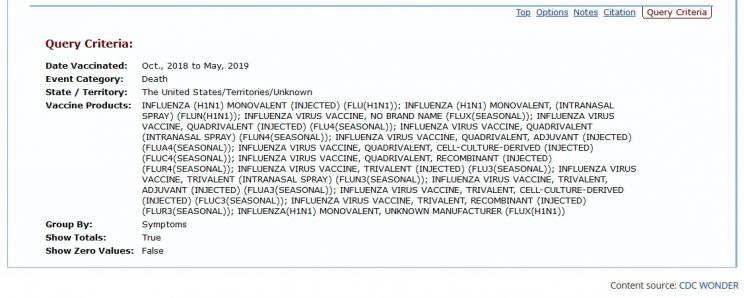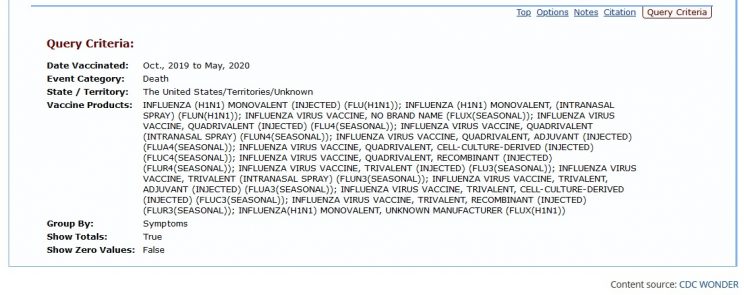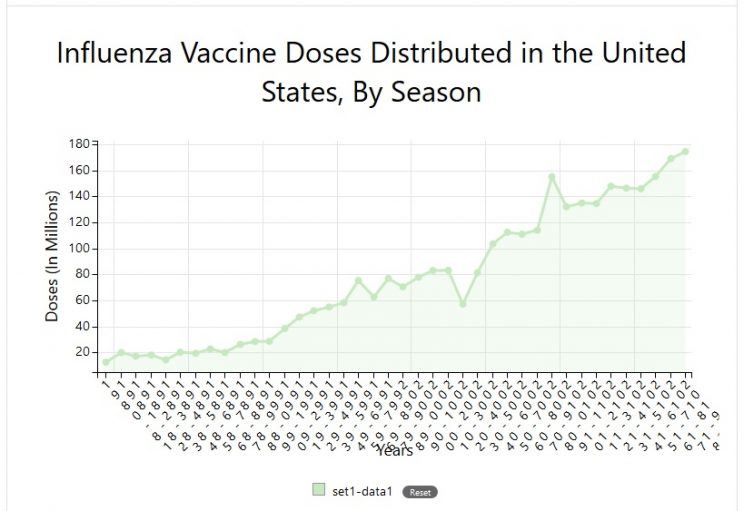
As I've noted in previous articles, the new COVID-19 vaccines are rapidly accumulating a disturbing number of adverse event and death reports on the US and UK databases.
These reports are submitted by medical personnel and members of the public who suspect a vaccine injection contributed to or was the direct cause of a subsequent illness or death.
However, if we are to believe health authorities, the frighteningly rapid accumulation of adverse event and death reports for the new COVID vaccines is pure coincidence. There is no causal link, they keep insisting, between the vaccines and the large volume of adverse event reports.
This argument would have merit if these authorities handed over all the adverse event reports, in their entirety, to a truly independent panel of analysts who subsequently confirmed a lack of causal association.
But don't count on that happening anytime soon.
Authorities will make sure that data remains inaccessible, so they can continue to spout the no "causal link" party line without challenge.
By doing so, they are literally having their cake and eating it: Appealing to the old "association does not equal causation" maxim, while avoiding the independent scrutiny that would confirm or refute an absence of causation.
There is Another Way
But there is another avenue of investigation that confirms something is definitely amiss with the new vaccines.
And that is by comparing the adverse event and death report figures for regular influenza vaccines versus the new COVID-19 vaccines.
At this page on the CDC website, you can access historical data showing the number of influenza vaccine doses distributed in the United States for each flu season. Below is the graph from that page depicting the data from the 1980-1981 through 2019-2020 flu seasons.
Let's take a look at the last two flu seasons.
During the 2018-2019 flu season, 169.1 million doses of influenza vaccines were distributed throughout the US.
The corresponding figure for the 2019-2020 season was 174.5 million.
At this page, the CDC estimates that 49.2% and 51.8% of US residents received influenza vaccinations during the 2018-2019 and 2019-2020 flu seasons, respectively. This estimate suggests around 165 million people in the US received the influenza vaccines during each of those seasons. This further suggests that upwards of 94% of the vaccines distributed found their way into the arms of Americans.
As to what qualifies as "flu season," the CDC writes "most of the time flu activity peaks between December and February, but activity can last as late as May."
The CDC adds: "The Weekly U.S. Influenza Summary Update is updated each week from October through May."
No worries. Let's now scoot over to the CDC's VAERS database, and see how many adverse event reports the influenza vaccines accumulated from October through May in the 2018-2019 and 2019-2020 seasons.
The search results for the 2018-2019 flu season show 22 deaths for the multitude of influenza vaccine products distributed in the US.

 And the results for the 2019-2020 flu season show 17 deaths for same multitude of influenza vaccine products.
And the results for the 2019-2020 flu season show 17 deaths for same multitude of influenza vaccine products.

 Now, let's compare these figures with those for the COVID-19 vaccines.
Now, let's compare these figures with those for the COVID-19 vaccines.
The CDC website gives a current tally of COVID-19 vaccines administered in the US, but its VAERS database has a two-week time lag for adverse events.
Thankfully, there is a lesser known page at the CDC website that not only has slightly more recent death figures, but concurrent vaccine administration data. I'll quote from that page directly:
"Over 92 million doses of COVID-19 vaccines were administered in the United States from December 14, 2020, through March 8, 2021. During this time, VAERS received 1,637 reports of death (0.0018%) among people who received a COVID-19 vaccine." (Bold emphasis added)
You don't need to be a master statistician to see the discrepancy here, folks.
Despite less than three months of use and a far lower number of people vaccinated, the new COVID-19 vaccines have already accumulated a 96-fold higher volume of death reports than what was seen for influenza vaccines during the 2019-2020 season, and a 74-fold higher volume when compared to the 2018-2019 season.
There's no denying the differences - they are huge.
And for those who subscribe to the (terribly misguided) "what doesn't kill you makes you stronger" school of thought, that certainly doesn't apply to the new COVID-19 vaccines. If they don't kill you, you may still suffer a vast array of life-threatening and serious adverse events.
According to the VAERS database, as of 5 March 2021, COVID-19 vaccines have generated a total of 30,938 adverse event reports for the US and territories. Of these, 1,066 were life-threatening, 630 resulted in permanent disability, 5,775 involved emergency room visits, and 3,459 required hospitalization.
Again, these figures dwarf those for regular influenza vaccines; there were 7,343 total adverse events reported for influenza vaccines administered during the 2018-2019 season, and 6,446 reported for those given during the 2019-2020 season.
And I must emphasize yet again, that only a small portion of adverse vaccine events are ever reported to VAERS. Which means the true differences are likely to be disproportionately greater again.
The data shows COVID-19 vaccines pose a far greater risk of adverse events, serious morbidity, and death than regular influenza vaccines. If this is all just coincidence, then the fact remains you have a far greater chance of suffering a very negative 'coincidence' after receiving a COVID-19 vaccine.
Association does not necessarily equate to causation, but in this case, it's waving a pretty huge red flag.
Ignore it at your peril.
If You Found This Article Helpful, Please Consider Leaving a Tip
This site is self-funded and relies on reader generosity. Researching and writing articles like this takes a lot of time, so any and all tips are greatly appreciated!
